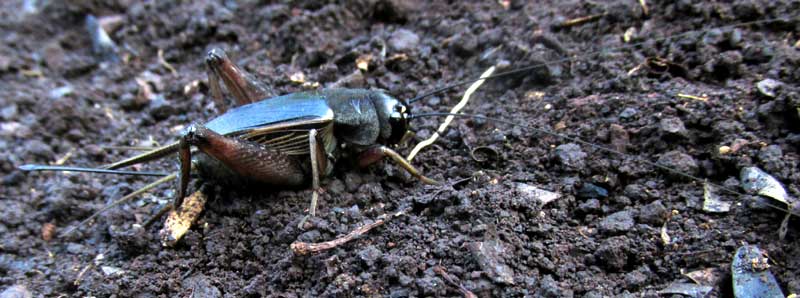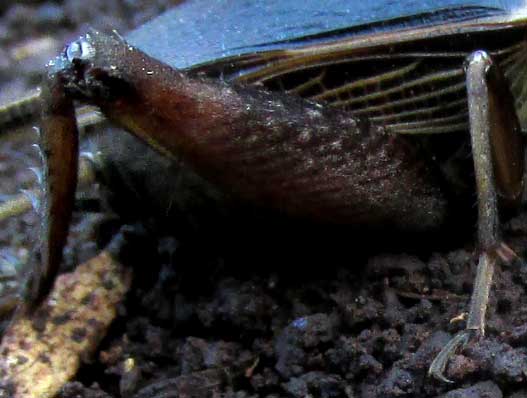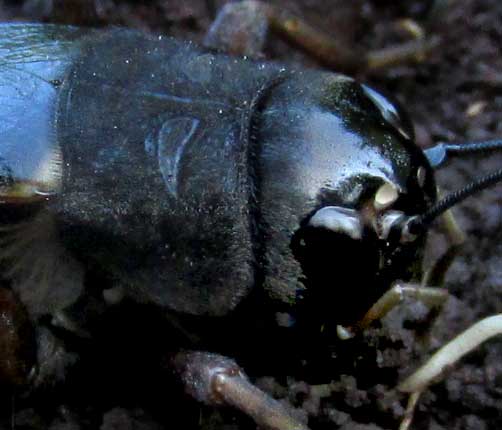Excerpts from Jim Conrad's
Naturalist Newsletter

from the November 1, 2015 Newsletter issued from Hacienda Chichen Resort beside Chichén Itzá Ruins, central Yucatán, MÉXICO
JAMAICAN FIELD CRICKET
Earlier I told you about sowing seeds of mustard greens and collards in the garden here at Hacienda Chichen. Because the soil was so granular that it dried out easily between morning waterings, I spread cardboard over the beds to keep the soil moist, so the germinating seeds wouldn't dry up and die. When it was time for seedlings to start appearing, each morning I'd peep beneath a few sheets of cardboard, but no seedling ever turned up, not a single one.
However, one morning beneath a sheet of cardboard I did find the handsome cricket shown above.
Normally crickets jump away before close-ups can be taken, but this one seemed to be stunned, at least for a few seconds -- long enough to get the close-up of the interesting broad-based spines on the rear of his tibia, shown below at the far left in the picture:

A split second before he finally jumped, I snapped the interesting head and pronotum markings shown below:

To me this looked just like field crickets commonly seen in most of the US, though up there I'd never noticed the upside-down-teardrop design on a pronotum (the "saddle" behind the head) or the white pit above the antenna bases. However, these turned out to be features of eastern North America's common field crickets.
Here are some basic facts about field-cricket taxonomy:
Taking all this in account, it's clear that GRYLLUS ASSIMILIS is the best bet for the name of a field cricket found in the Yucatan and looking like ours, keeping in mind that field cricket taxonomy, especially in this part of the world, still isn't all worked out.
Jamaican Field Crickets are characteristic of tropical American lawns, weedy fields, roadsides and other open areas. In general, they're described as omnivorous, eating dried organic matter, fresh plant matter, small fruits, seeds, and, when especially hungry, both living and dead insects.
You can hear this cricket''s song in a WAV file from the University of Florida.